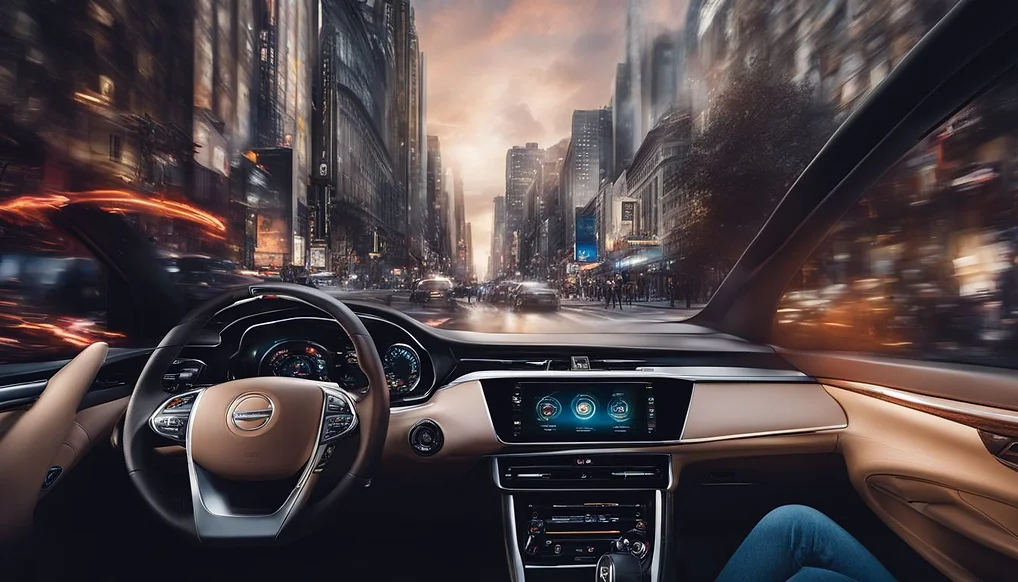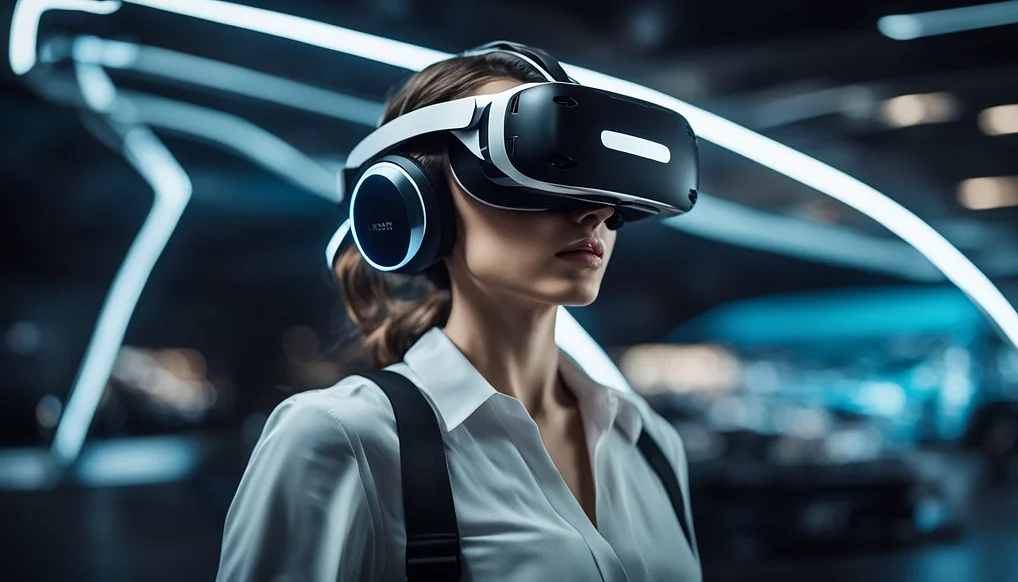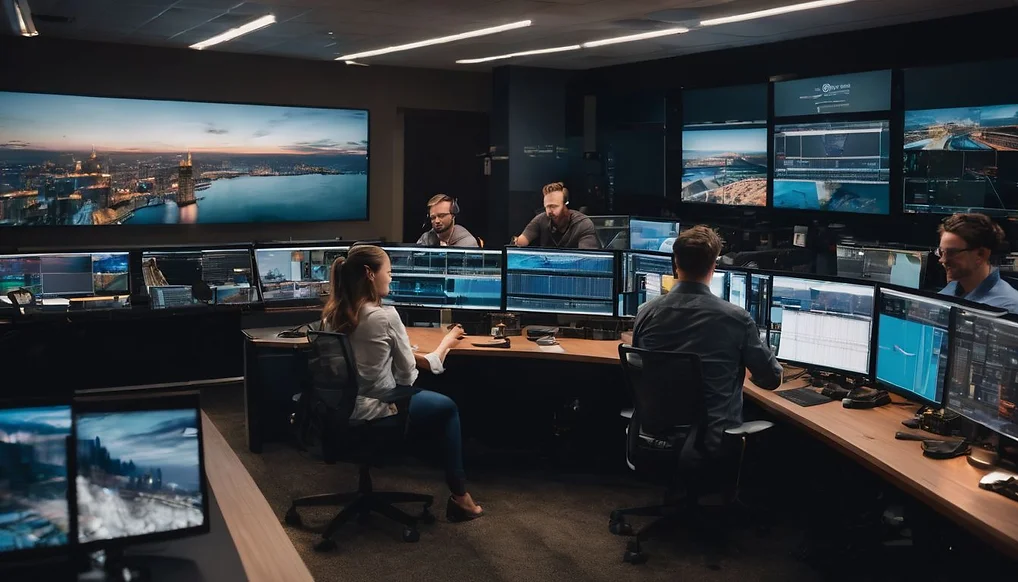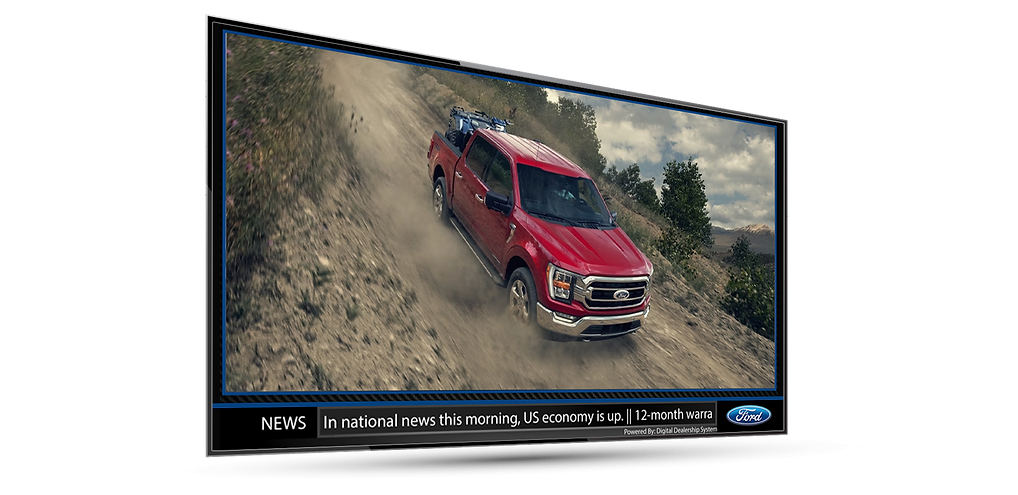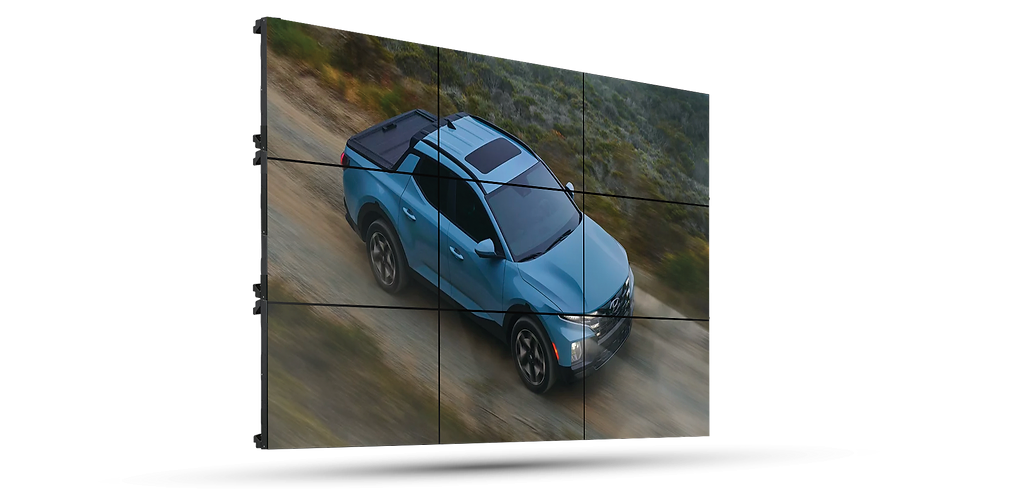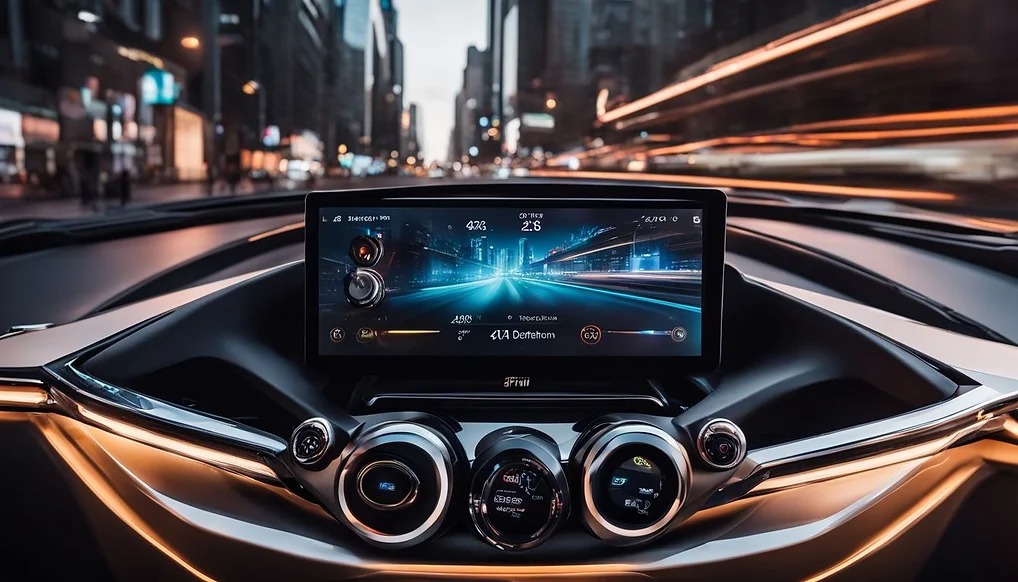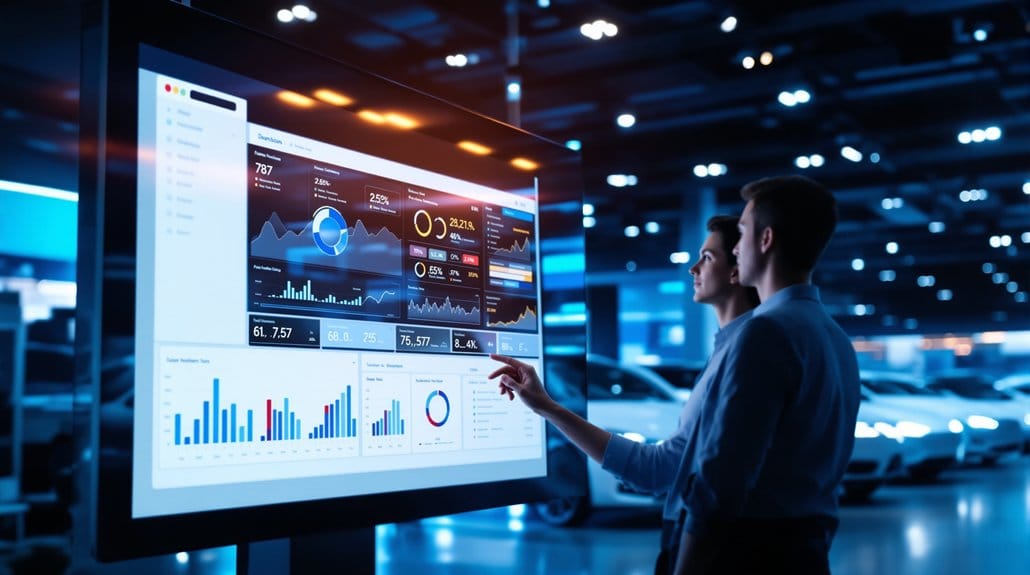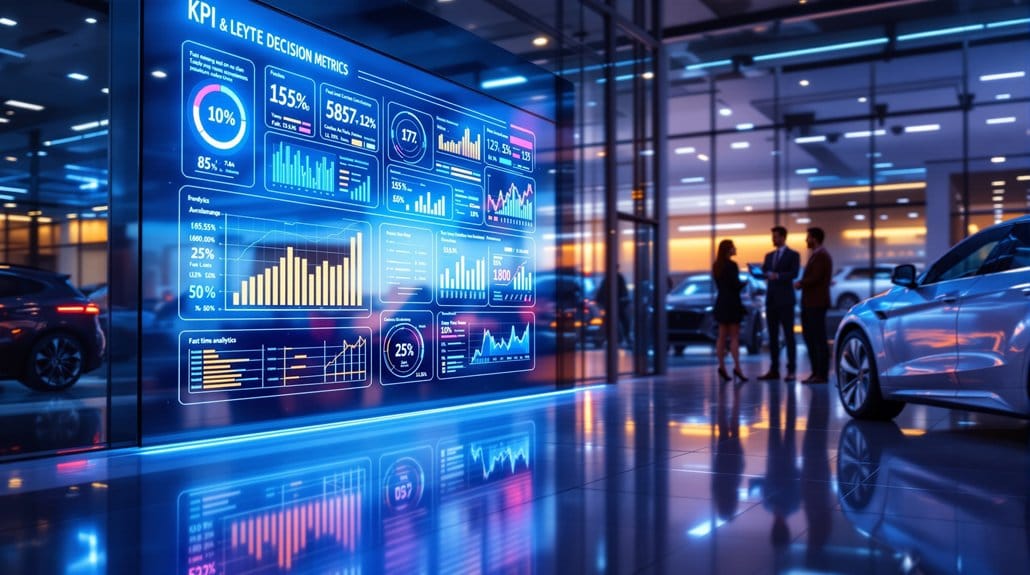Have you ever wondered how the digital displays in your vehicle operate? These connected systems, which became popular around 2010, are now a crucial part of nearly every modern car.
This blog post will take you through everything you need to know about automotive connected digital displays and how they enhance our driving experiences. Ready or not, here comes the future of motoring!
Key Takeaways
- Automotive connected digital displays allow cars to communicate with the outside world and provide visual cues for pedestrians and other vehicles, enhancing safety on the road.
- Advancements in automotive exterior display technology include mobile billboards and expanded integration areas for displays, leading to improved advertising reach and connectivity throughout the vehicle.
- Connected digital displays in automotive applications improve communication with customers, accelerate the development of in-vehicle displays, and enhance customer experiences by providing relevant information and personalized interactions.
The Role of Automotive Exterior Displays

Automotive exterior displays serve as a means of communication with the outside world and provide visual cues for pedestrians and other cars.
Communication with the outside world

Cars can now “speak” to the world. Many use automotive exterior displays for this task. These screens share key info. They tell others about a car’s speed, location, and plan. This is known as vehicle-to-vehicle (V2V) talk.
It uses short-range tech to send words between cars on the road. Not just cars, but people walking by get cues too! This boosts safety for all users of roads and paths alike – drivers or not!
No wires are needed in any of this talk – it is all done wirelessly! In short, displays have given cars a voice and every car owner must value that.
Visual cues for pedestrians and other cars
Car displays can talk to people and other cars. The messages shown on car screens help in many ways. They tell if the car is parking or changing lanes. These cues are easy to see. This is a good way to keep everyone safe on the road.
Self-driving cars use these visual cues, too. They can show simple signs or even look like faces! This lets people know what the self-driving car will do next. It helps build trust with new technology.
Making these visual aids better is something many smart people work hard on every day.
Advancements in Automotive Exterior Display Technology
Automotive exterior display technology has seen significant advancements, including the use of mobile billboards and expanded integration areas for displays. In addition, autonomous vehicles are now incorporating digital displays to enhance communication and safety on the road.
Mobile billboards

Cars can be moving ads with mobile billboards. It’s like your vehicle wears a big sign that shows off your brand. This way of advertising is not new. The first were on top of taxis and called “car tops”.
Nowadays, these ads can change too. They can use digital or mechanical displays just as active billboards do. Using things like “rollerbar” or “tri-vision” tech lets the ad shift while it travels down the road! Mobile billboards allow for outdoor advertising to reach more people in different spaces than regular signs do.
Expanded display integration areas
Automotive display technology is evolving rapidly, leading to a growing trend of incorporating more displays into cars. With increased data rates and reduced wire counts, automotive displays are accomplishing more with less wiring.
This expansion in display integration areas allows for improved connectivity and integration of digital displays throughout the vehicle. As a result, the market for automotive displays is expanding to meet the demand for connected digital displays in cars.
Displays in autonomous vehicles
Displays in autonomous vehicles play a crucial role in providing essential information to both the driver and passengers. These displays are designed to present important trip-related details, such as speed, navigation instructions, and alerts.
With advancements in technology, developers are now exploring innovative display solutions that can seamlessly integrate with automated driving systems. These displays use smart connectivity features to exchange information with other vehicles and external systems.
By using these displays, autonomous vehicles can enhance road safety and provide a more interactive and immersive experience for everyone on board.
Exploring New Display Technologies for Automotive Applications
Automotive companies are constantly exploring new display technologies for various applications, including considerations for quality, integration with sensors, and process control integration.
Quality considerations
When it comes to exploring new display technologies for automotive applications, quality is a crucial consideration. Automotive displays need to have high brightness and contrast levels to ensure optimal visibility in different lighting conditions.
Additionally, they should be resistant to vibrations and impacts that can occur while driving. Manufacturers are also focusing on improving the durability of these displays, ensuring they can withstand temperature variations and harsh weather conditions.
By prioritizing quality considerations, automotive companies can provide customers with reliable and long-lasting exterior digital displays for their vehicles.
Integration with analog and digital sensors
Integration with analog and digital sensors is a crucial aspect of exploring new display technologies for automotive applications. This integration enhances the in-vehicle infotainment system and provides a more interactive and intuitive user experience.
It enables features such as gesture control, proximity-based controls, and advanced camera-based functionalities.
These sensors include gesture recognition sensors, proximity sensors, and camera sensors. By integrating these sensors with new display technologies, advanced automotive infotainment systems can be created that offer improved functionality and user experience.
This integration is part of the broader trend of incorporating Internet of Things (IoT) technologies into automotive systems.
Process control integration
Process control integration is a crucial aspect when it comes to exploring new display technologies for automotive applications, especially in the context of automotive connected digital displays.
This integration involves incorporating processes and systems that help ensure seamless operation and coordination between different components of the display technology. By integrating process control systems, manufacturers can optimize performance, enhance functionality, and improve user experience.
It also allows for better monitoring and management of various parameters related to the display technology.
For instance, Texas Instruments (TI) offers interactive system block diagrams that guide users to a wide range of integrated circuits (ICs) and reference designs specifically designed for infotainment and cluster design in automotive applications.
The Benefits of Connected Digital Displays in Automotive
Connected digital displays in automotive provide improved communication with customers, fast-tracked development of in-vehicle displays, and enhanced customer experiences. Find out more about the exciting possibilities of automotive connected technology.
Improved communication with customers
Connected digital displays in the automotive industry greatly improve communication with customers. These advanced displays allow car dealerships to showcase important information, promotions, and interactive content in a visually engaging way.
With the use of digital signage, customers can easily find information about different car models, compare features, and even schedule test drives.
This enhanced communication not only helps to create a more customer-centric approach but also allows for a seamless and efficient sales process.
By providing relevant and up-to-date information through connected digital displays, car dealerships can better meet the needs and preferences of their customers, resulting in improved customer satisfaction and increased sales.
Fast-tracked development of in-vehicle displays
In-vehicle displays have undergone rapid development, thanks to advancements in technology. Car manufacturers are constantly improving and adding new features to these displays, providing a better user experience for drivers and passengers.
With the integration of smartphone connectivity, voice recognition systems, and advanced navigation systems, in-vehicle displays have become more intuitive and user-friendly than ever before.
This fast-tracked development has greatly enhanced the overall driving experience by allowing drivers to access information quickly and easily while on the road.
Enhanced customer experiences
Connected digital displays in automotive applications offer numerous benefits that enhance customer experiences. Through these displays, communication with customers can be greatly improved, allowing for convenient feedback mechanisms and personalized interactions.
Customers can receive important information through pop-up messages on their vehicles, ensuring they stay informed and engaged.
Additionally, connected displays enable the fast-tracked development of in-vehicle infotainment systems and navigation features, providing customers with a seamless and enjoyable driving experience.
By leveraging digital signage solutions in automotive retail settings, dealerships can also create visually exciting experiences that boost customer satisfaction and increase sales.
The Future of Automotive Showrooms: Digital Signage
Showroom Digital Signs – Digital Dealership System
Automotive showrooms of the future will feature visually exciting experiences with timed displays, vehicle panels acting as digital signage, and the potential for external media bars to function as interactive displays.
Currently, dealers who utilize Showroom TV and Video Walls from companies like the Digital Dealership System, are thought leaders in the industry that see their showroom as a way to separate themselves from the competition.
Based on the overall costs of building a new car dealership, owners can easily justify the price of adding screens and content to help boost profits and closing rations.
LED Video Wall – Digital Dealership System
Timed and visually exciting experiences
Automotive showrooms of the future are all about creating timed and visually exciting experiences for customers. Through the use of digital signage and automotive connected digital displays, these showrooms can transform traditional experiences into something more engaging and interactive.
By incorporating timed content that changes throughout the day, customers are continuously captivated by new information, offers, and visuals. The combination of vibrant graphics, immersive displays, and interactive technology creates an environment that not only captures attention but also enhances customer satisfaction.
These timed and visually exciting experiences can lead to a boost in sales as customers become more engaged with the products on display.
With digital signage playing a significant role in this transformation, automotive showrooms are poised to offer innovative and exceptional customer experiences like never before.
Use of display panels on vehicles
Vehicle display panels are becoming increasingly popular in the automotive industry. These displays provide an innovative way to attract customers and engage with them while on the road.
By incorporating digital signage on vehicles, car dealerships can showcase their latest models and promotions to a wider audience. This form of outdoor advertising allows potential customers to see eye-catching visuals and video content as they pass by, generating curiosity and interest.
Additionally, interactive displays on vehicles can be utilized during test drives or at auto shows, providing a unique and interactive experience for customers. With the use of display panels on vehicles, car dealerships can effectively captivate their target audience and enhance customer attraction strategies.
Potential for external media bars as displays
External media bars have the potential to revolutionize automotive showrooms through digital signage. These innovative displays, like Sony Honda Mobility’s Media Bar, can be positioned between the headlights of vehicles.
With the ability to showcase various media and information related to the vehicle, external media bars create visually exciting experiences for customers visiting showrooms. As autonomous driving becomes more prevalent, these types of displays may become even more popular, as they can provide real-time updates and personalized content to enhance customer experiences.
The future of automotive display technology lies in these dynamic exterior displays that capture attention and engage customers on a whole new level.
Conclusion
In conclusion, automotive connected digital displays are revolutionizing the way we interact with vehicles. With advancements in technology, these displays offer improved communication, enhanced customer experiences, and fast-tracked development of in-vehicle displays.
As we look to the future, it’s exciting to imagine how digital signage will transform automotive showrooms and create visually exciting experiences for customers. The potential for connected digital displays in the automotive industry is limitless.
FAQs
1. What are automotive connected digital displays?
Automotive connected digital displays are screens or panels in a car that show information and can connect to various devices like smartphones or navigation systems.
2. How do automotive connected digital displays enhance the driving experience?
Automotive connected digital displays enhance the driving experience by providing real-time information, such as navigation instructions, music controls, and vehicle performance data, all easily accessible from one screen.
3. Can I customize the content on an automotive connected digital display?
Yes, you can often customize the content on an automotive connected digital display to suit your preferences. This may include choosing which information is displayed or adjusting settings for brightness and contrast.
4. Are there any safety considerations when using automotive connected digital displays?
Yes, it is important to use automotive connected digital displays safely by minimizing distractions while driving. Ensure that you set up and interact with the display before starting your journey or use voice commands where applicable to keep your focus on the road.


